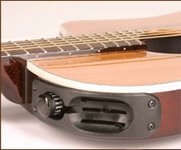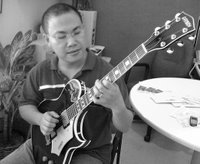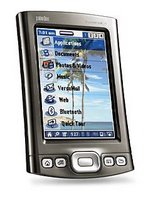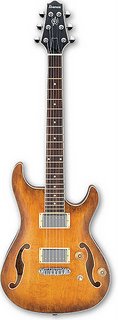
Got this email from Dante, a Davao City-based guitar player-friend:
"I was at Perfect Pitch at Park Square and there was a guy trying out a Line 6 Variax Acoustic. It was great. It models a lot of sounds. It can’t copy nylon strings but the steel strings are OK. The 12-string is also cool. You can even change the tuning digitally (i.e. the guitar is standard-tuned but you will hear alternate tunings)."
I agree! I was at the same store last month and tried the same guitar and was very impressed by it. I was actually going to write about my experience with the Variax Acoustic but never got around to it, so I guess now’s an opportune time.
The Variax Acoustic on display at Perfect Pitch is the 700 model and sells for about 90,000 pesos (give or take a few). On the net it’s listed at 1,199 US dollars, or only about 62,000 pesos, but Perfect Pitch bases its price on the list price of about 1,679 US dollars – about 87,500 pesos (to which one has to add shipping and taxes).
Here’s how Line 6 describes the guitar:
Variax Acoustic 700 offers you 16 models of the finest acoustic instruments on the planet with the push of a button. You can easily access jumbos, 12-strings, or even a nylon string classical to suit any style of play. Variax Acoustic 700 gives you the freedom to achieve an expertly mic'd acoustic sound without complex setups or feedback, even at concert-level volumes! Recording a great acoustic sound no longer requires a noise-free environment or a big equipment budget; just plug in and go. You also get instant access to alternate tunings for endless possibilities to fuel your inspiration.
As a mainly acoustic guitar player, I was rather disappointed when I picked up the Variax Acoustic 700: it was solid-bodied, which meant it didn’t give any appreciable sound when played in its natural, unplugged state. Its weight also made it feel like an electric guitar in my hands. Oh well, I guess it would have been too much to expect it to be a good guitar both plugged and unplugged.
So off to the amplifier we went, and the Perfect Pitch guy plugged it into an acoustic guitar amp (can’t remember the brand, though). Before strumming I set the dial, located a t the upper bout, to “Dread,” which I guessed (correctly) was based on the sound of the dreadnought with which I was familiar. I strummed it and, lo and behold, it gave a full, even, and rich sound, with lots of bass and high end.
t the upper bout, to “Dread,” which I guessed (correctly) was based on the sound of the dreadnought with which I was familiar. I strummed it and, lo and behold, it gave a full, even, and rich sound, with lots of bass and high end.
Then I tried the other settings, and while I couldn’t tell if I was hearing the exact replica of those guitars (parlor, jumbo, jazz, even banjo and shamisen), there was enough difference between the models to make it seem like I was playing a completely different guitar with each setting. Also, tweaking with the three sliders in the control panel gave different mic positions, volume, and compressor settings. All the models gave a satisfying sound, and the fact that it gave no feedback was a plus.
As a guitar, the Variax Acoustic 700 plays really well, better than the Variax 300 (electric) that I tested last year. The action was spot on with no buzz, and the neck was smooth. The intonation was perfect: I tuned it once and was able to play all over the neck with no problem. The only beef I had was its aforementioned weight: it was just too heavy for an acoustic guitar. Oh, and since this is essentially an electric guitar, I couldn’t tap the soundboard to give a percussive sound. Other than that, the guitar could catch most of the nuances of striking, strumming, plucking, and slapping the strings.
I think one of the best features of the Variax Acoustic 700 is its ability to give alternate tunings on the fly, without having to touch the tuning keys. This is done digitally, and one only has to press the model select knob. Once in this mode (which is indicated by a flashing red-green light), you can choose the tuning you want with the top slider (the one that controls the volume). You can take your pick from open E, open A, open D, low G, high G, DADGAD, drop D, and E & A octave down.
I’ve always wanted to experiment with open tunings but have never really gotten into it for fear of breaking strings from all the detuning that’s required (being a third world guitar player means trying to make strings last for weeks on end). With the Variax Acoustic 700 it was all a matter of pushing a knob and sliding the control. I played in different tunings and it really was much easier to get both melody and harmony mixed together. I could imagine myself doing well as a fingerpicker with this guitar.
The Variax Acoustic 700 certainly lives up to its name, but I think its main drawback is that it is too electronic and too digital for me. Not that the digital sounds aren’t great: they all sound good, and I’ve never really believed in musicians who say electronic modeling is “cold” and “impersonal.” My main concern with this guitar is what happens if the digital circuitry bogs down? Repairs will most certainly be expensive, and cutting corners (by taking it to non-Line 6 technicians) could prove disastrous. I’ve already had my Line 6 DL4 Delay Modeler fixed once, and I guess I’m just afraid it could happen to this guitar.
Not that I could buy it, of course. At almost a hundred thousand pesos, I have mor e important things to spend my money on. Line 6, however, has just introduced the Variax Acoustic 300 (right), and I see that in some websites it sells for about 600 US dollars – half the price! The only difference I can see for now is that the 300 doesn’t seem to have alternate tunings – which is a shame since that was the biggest draw for the 700 for me. Oh well, I guess you can’t have it all.
e important things to spend my money on. Line 6, however, has just introduced the Variax Acoustic 300 (right), and I see that in some websites it sells for about 600 US dollars – half the price! The only difference I can see for now is that the 300 doesn’t seem to have alternate tunings – which is a shame since that was the biggest draw for the 700 for me. Oh well, I guess you can’t have it all.

 e weeks behind schedule, and it looks like it's going to take at least another week before this project is done.
e weeks behind schedule, and it looks like it's going to take at least another week before this project is done.












